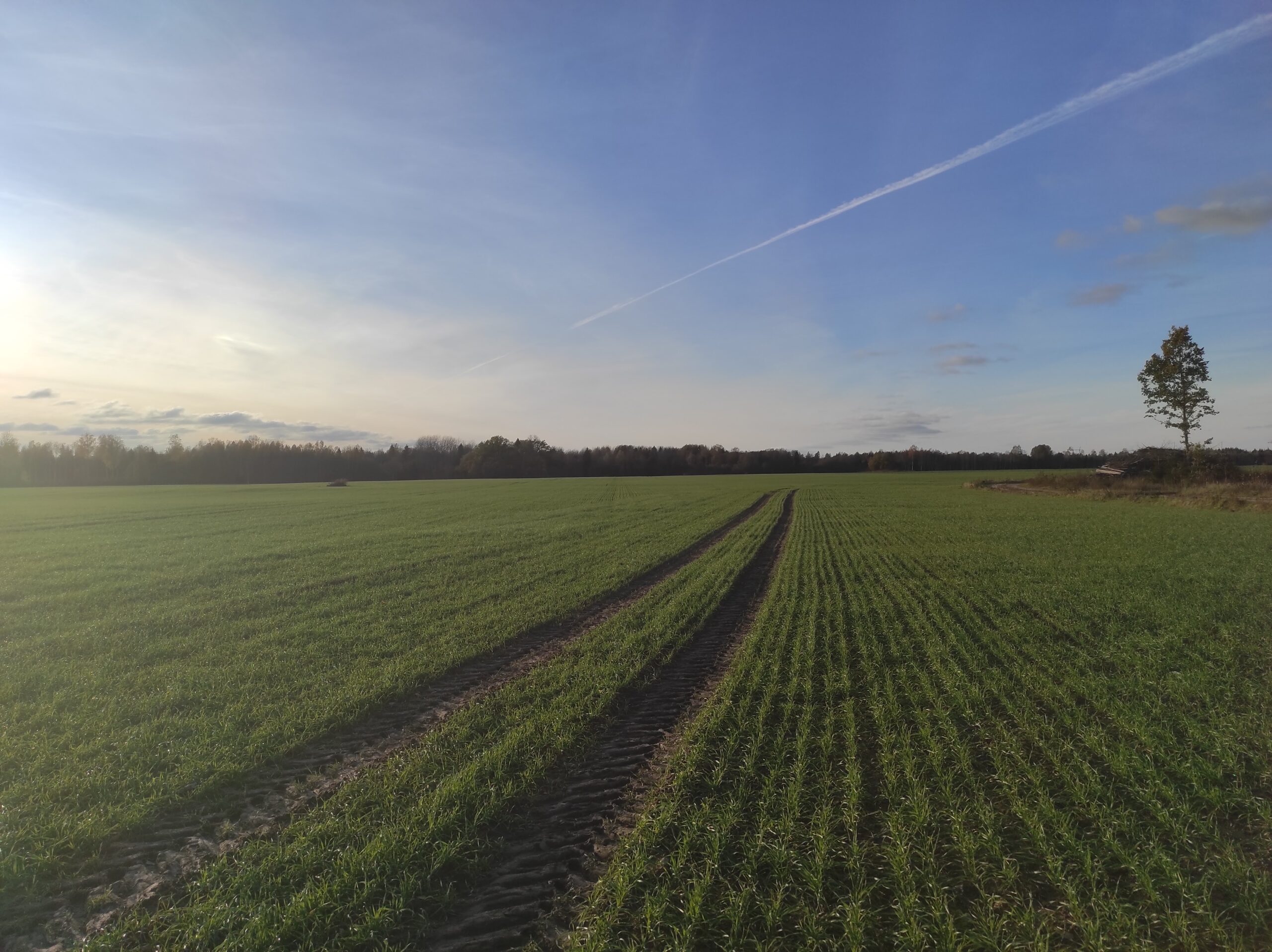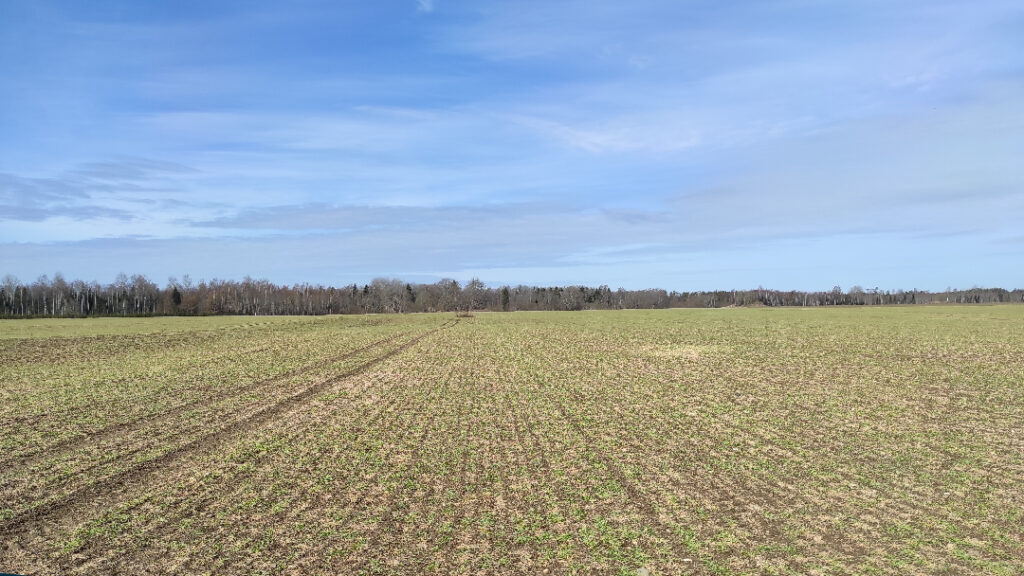When spring crops experience below freezing temperatures, the sap in the plant cells freezes, cells burst, and the plant dies. Winter crops on the other hand:
- As the days become shorter and temperatures drop, it signals to the plants that it’s time to start preparing for winter. During this time, there is an increase in the sugar content in the cell sap, preventing it from freezing and the cells from bursting.
- The plant’s growth slows down, and essentially, it enters a state of dormancy where all processes occur very slowly to conserve nutrients and energy.
- A deep root system helps the plant access nutrients in winter, even when the soil is frozen, the roots of winter wheat can reach up to two meters deep.
- Snow cover is very helpful because snow has bad thermal condcuctivitiy roughly speaking, a 1 cm layer of snow keeps the temperature 1 degree higher at the soil level than the air temperature.
- Breeding has given us varieties that withstand even the harsh winters of 🇪🇪. For example, common and excellent varieties in the UK may not thrive here because they are bred with milder winters in mind
What I see is the most important when growing winter crops in Estonia
In my opinion, the most crucial factor is the sowing time, and it overshadows everything else – varieties, soil, climate, agricultural techniques, etc.
Winter Oilseed Rape: Sowing time until August 15th. Beyond this date, it becomes risky, even if you choose a variety with a sowing window until August 25th. All WOSR sown after mid-August have brought varying degrees of failure to me because 🇪🇪n autumns are so unpredictable
Winter Barley: Sowing should ideally be completed by September 10th, preferably earlier. WB is considerably less resilient to winter than winter wheat, so there needs to be enough warm time for root system development and the growth of additional shoots. Shoots that develop in the autumn contribute to the majority of the yield.
Winter Wheat: Sowing time until September 15th. Actual sowing times in 🇪🇪 vary from the end of August to the first days of October, and you will get yield but how much? In the spring, growth and sprouting are better if there has been enough time for root development in the autumn. The plant doesn’t have to expend too much energy in the spring for root development
Ideal weather for winter crops
September – Daytime temperatures around 15°C, nights above +5°C. Adequate rainfall without disrupting sowing.
October – Consistent temperatures around 10°C, occasional cool nights, no overnight frost before month-end. Moderate rainfall to avoid root rot.
November – Gradually decreasing temperatures, frosty nights signal the end of spraying work. Consistent nights below freezing by month-end, daytime slightly above. Soil begins to harden.
December – Days and nights below freezing, soil hardens, plants enter winter dormancy. Without snow, temperatures can reach -10°C, but with sufficient snow can go even lower.
January to mid-March – Permanent snow cover, temperatures drop to -20°C. With enough snow, even -30°C isn’t problematic.
Mid-March to mid-April – Higher sun has power for rapid snow melt, soil allows water flow, no ponds forming on the fields where plants could die. Fertilization can begin.
Whats the worst weather that winter crops could have?
August – Drought during winter rapeseed (WOSR) sowing, causing uneven germination.
September – Because constant rainfall winter crop sowing nearly impossible. Brief dry periods allow winter barley (WB) sowing by September 25th. Moisture received, WOSR begins germination. Plants in vastly different growth stages.
October – Low temperatures, little sunlight, and consistently wet soil. Winter wheat (WW) sowing in muddy conditions, finished by October 10th.
November – Sudden cooling with constant frosty nights and intermittent warmer daytime temperatures. Continuous precipitation – rain, snow, sleet. WW at best 1-2 leaves. End of the month, temperatures drop below freezing, halting plant growth.
December – Cold spell, 3-4 consecutive days of -20 degrees without snow cover. WOSR and WB likely dead. WW somehow survives.
January to April – Air temperatures in minuses, but plants under 15 cm of fresh snow are trying to grow. Constant alternation of thaw and cold periods
April – Fields of WOSR and WB empty, WW fields very patchy, practically all destroyed



